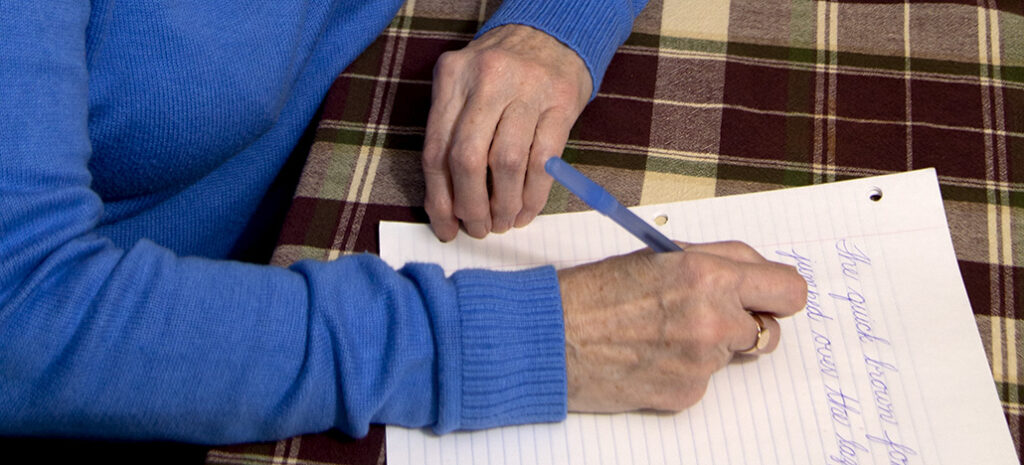A once-praised skill is now almost obsolete. But one woman hasn’t given up the fight to save cursive writing.
Abby Butler
Kicker

Pristine penmanship is a skill that was encouraged and praised for many years.
Nowadays, the ability to read and write in cursive dwindles with each passing generation.
Though many people might argue that the cursive writing method is redundant in a world of texts, emails and e-signatures, others are willing to argue the form is – or should be – still relevant.
Winnie Cowan is just one of the believers in the value of cursive writing.
Cowan was a teacher from 1974 to 2005. During her career, cursive writing was introduced in Grade 2, and she said students were always so excited.
“They couldn’t wait to learn how to write! It was exciting, it was something new,” said Cowan. “Oh, they just loved it!”
Since her retirement, she has worked a variety of different jobs with children. Before finishing her last job, she had one recurring thought.
“It’s awful. Some people say, ‘So what,’ but I just feel that it’s a skill that they dropped, and they shouldn’t have.”
– Winnie Cowan
“Cursive writing kept coming back into my head,” she said. “I used to say to my husband ‘I’d like to teach cursive writing from here (her home). I mean, I really would.’ So, I started thinking about it, and I talked about it a lot, but never did anything about it.”
In early January, Cowan finally took the big step and launched her own at-home business called Cursive Writing with Win. The goal is to offer children private lessons in this skill that is no longer taught in the classroom.

The business was fueled not only by an enjoyment of writing but also by her disappointment in that it’s no longer taught in schools.
Her two granddaughters, ages nine and 12, are currently in school but have not been taught how to write in cursive. She said she felt saddened knowing it is not an expected outcome.
“It’s awful. Some people say, ‘So what?’ but I just feel that it’s a skill that they dropped, and they shouldn’t have.”
She said that if she could sit down and teach even one child how to write, she would be happy because she’ll have done it knowing she did something she really wanted to do.
Eye-opener
Colleen Gillingham also strongly values cursive writing. Not just for herself, but also for her children.
“I was shocked when they weren’t being taught,” she said.
Gillingham has three children, ages 26, 12 and seven. Not one of them was taught in school how to write in cursive.
When reflecting back on her own school experiences, she says cursive writing was not an option; it was an expectation.
“When we got to a certain point, we would get in trouble for printing,” Gillingham said. “You had to cursive write.”
As a parent who was taught to write in cursive and who has children who weren’t, she said it has certainly impacted some aspects of their family life. She told a story about leaving a note for her son to do some chores while she wasn’t home and came home to find the chores not completed. When she asked her son about it, he said, “Mom, I can’t read it. I don’t know what you asked of me.”
The note was written in cursive.
Gillingham said with a sigh, “That was an eye-opener for me.”
To her, society has lost not just an art form but also a way of communication.
“In our past generations, all of our history, all of our notes, everything is all in cursive writing. When they go to examine this in their futures, if they wish to, or if they have to look at documents from before, they’re not able to read it or figure out what it says. So, I think they’re going to lose a lot.”
To Cowan, the neglect of schools to teach students how to write in cursive is not just taking away a skill; it is taking away an art form.
“With the basic fundamental capability of being able to cursive write, I think is actually something that is a right to our children that is being taken away,” Gillingham said with a tinge of sadness in her voice.
The days of beautiful penmanship are long gone and, many will argue, far too soon.




Be the first to comment